Exponential Moving Average Revealed
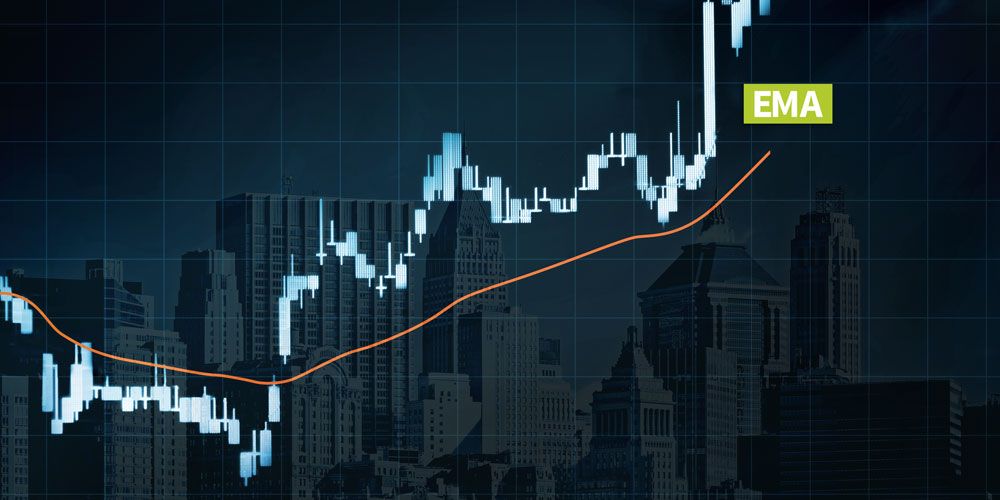
Learn Forex Trading
A Moving Average is one of the most widely used indicators in the financial markets.
Like most indicators, it is very easy to apply on the price chart – you simply drag it onto the prices. Its interpretation is also fairly straightforward; buy above or sell below the moving average line. It’s no wonder that so many technical traders, even fundamentalists, use it for their analysis and trading.
Of course, moving averages come in many ’flavours’. Simple Moving Average, Linear Weighted, Geometric, Exponential, Triangular, Volume Adjusted and Variable, to name a few.
If you are new to moving averages, you may be wondering which method is best.

Simple Moving Average (Arithmetic)
Most traders start experimenting with the Simple Moving Average (Arithmetic) in the early stages of their trading career.
This is calculated by adding the closing price of a number of candlesticks (equal to the time period of the moving average) and then dividing this number by the total number of prices. The result is known as the average. The oldest price is then dropped (i.e. discarded from the calculation) and the same formula is applied to the next prices. Therefore, it becomes the moving average.
For example, the calculation of a 5-period simple moving average begins with the prices from index 7 to 3, then the price of index 7 is dropped and the next average includes prices of index 6 to 2, after which the price of index 6 is discarded and the next calculation uses prices of index 5 to 1:
| Index | Price | Average |
|---|---|---|
| 7 | 1.10110 | |
| 6 | 1.10120 | |
| 5 | 1.10125 | |
| 4 | 1.10140 | |
| 3 | 1.10143 | 1.101276 |
| 2 | 1.10149 | 1.101354 |
| 1 | 1.10156 | 1.101426 |
Here is the formula in the form of a mathematical notation:
Simple Moving Average = [Price(n) + Price(n-1) + Price(n-2) + … + Price(1)] / n
Where n is the period of the moving average.
However, when investors gain more trading experience, they start to understand the disadvantages of the simple moving average. Lagging, for example, takes into account only those prices in the time interval and assigns equal weight to all prices in the period. In an attempt to address these types of issues, technical analysts came up with other calculation methods, such as the Exponential Moving Average (EMA).
EMA
This method addresses the biases inherent in the simple moving average, specifically issues with equal weight, since it only accounts for the prices in the predefined period. As a matter of fact, EMA takes into account all available prices in its calculation and assigns more weight to the most recent prices. Lagging, though, remains a disadvantage.
Here is the EMA formula:
EMA = (Price(i)*P)+(EMA(i-1)*(1-P))
Where P is the period and i is the candlestick index.
This is a recursive formula that even the most experienced traders would have difficulty understanding. Perhaps, if we write the formula in a different way, it will be easier to understand. For example:
EMA = (Price current – EMA previous) * multiplier + EMA previous
Where multiplier = 2/Periods + 1
Let’s take a look at the calculation of a 10-period Exponential Moving Average. Note that the oldest EMA (i.e. for index 10) is calculated as a Simple Moving Average of the previous prices.
Multiplier = 2/(Period+1)
= 2(10+1)
= 2/11
= 0.18182

Number of Periods
One of the biggest dilemmas a trader faces is deciding how many periods to use with the EMA.
There are a few variables to consider when deciding on the periodicity of a moving average, these include:
- Market Convention
- Constant
- Volatility
- Optimisation
- The predominant cycle
In the stock market, we notice that traders usually rely on moving averages that are 200 periods long. In the foreign exchange market, the period is much shorter; at times it’s 50, 20 or 10. Another decisive factor may be the volatility in the specific market. Trending markets imply shorter periods, where low volatility suggests longer lengths to avoid whipsaws (false signals). Frequent optimisation is another way of identifying the “best” possible period. On the other hand, some traders use a constant period for all markets and all timeframes. The choice is yours!
Trend Analysis
Trend identification is one of the easiest ways to use a moving average. When prices rise above the line, then an upward movement could be in the making.
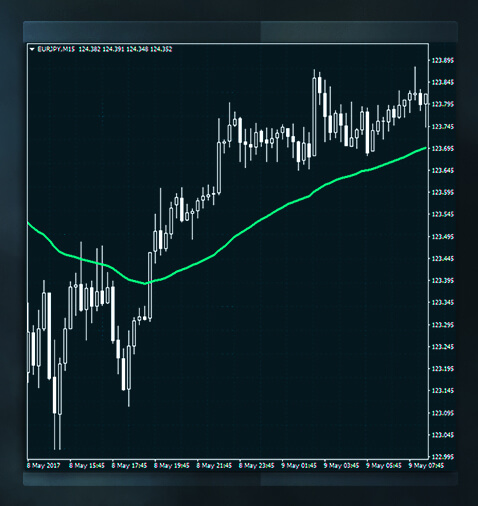
On the other hand, when prices fall below the line, then a downward movement could be starting.
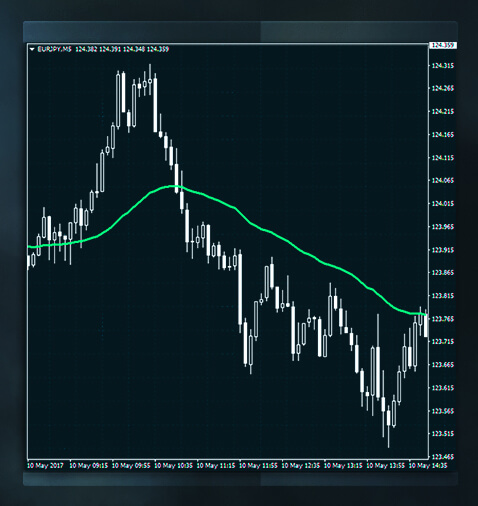
Moving averages make extreme identification look very easy. When prices are far above the moving average, this may signal overbought trading. When prices are far below the moving average, it’s an indication that oversold levels may have been reached.
Interpretation
Just like the Simple Moving Average, a buy signal is generated when prices move above the moving average. Similarly, a sell signal is generated when prices fall below the moving average. To avoid false signals, price confirmation is needed most of the time. For example, a buy signal would require a close above the moving average line. Similarly, a close below would be needed for a sell signal.
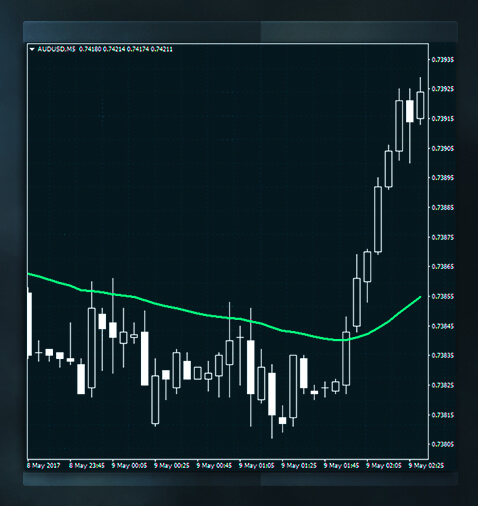
Undoubtedly, whipsaws or false signals remain one of the major disadvantages of moving averages. One way to reduce them, is by waiting for the ‘tip’ of the moving average line to turn upwards before placing a buy order, or to point downwards when placing a short position. Needless to say, all signals require confirmation by the price itself.
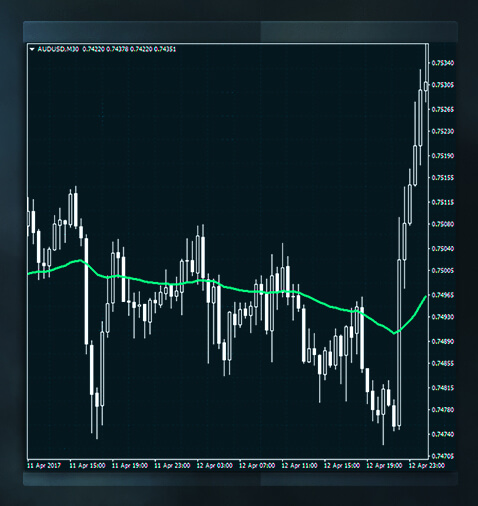
Of course, moving averages may be combined with other indicators and oscillators to provide traders with greater precision.

Conclusion
The Exponential Moving Average is a useful tool that is part of many traders’ arsenals. Its simplicity in trend identification, as well as the fact that this method addresses both criticisms of the simple moving average, makes it the method of choice for many traders. Unfortunately, combined with the delay in signals, false signals can cause difficulties when caught in a sideways market.
Disclaimer: This written/visual material is comprised of personal opinions and ideas. The content should not be construed as containing any type of investment advice and/or a solicitation for any transactions. It does not imply an obligation to purchase investment services, nor does it guarantee or predict future performance. FXTM, its affiliates, agents, directors, officers or employees do not guarantee the accuracy, validity, timeliness or completeness of any information or data made available and assume no liability for any loss arising from any investment based on the same.
Risk Warning: There is a high level of risk involved with trading leveraged products such as forex and CFDs. You should not risk more than you can afford to lose, it is possible that you may lose more than your initial investment. You should not trade unless you fully understand the true extent of your exposure to the risk of loss. When trading, you must always take into consideration your level of experience. If the risks involved seem unclear to you, please seek independent financial advice.
